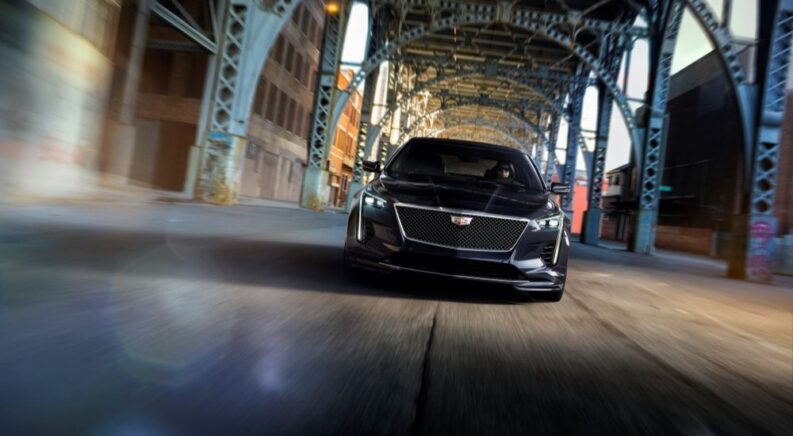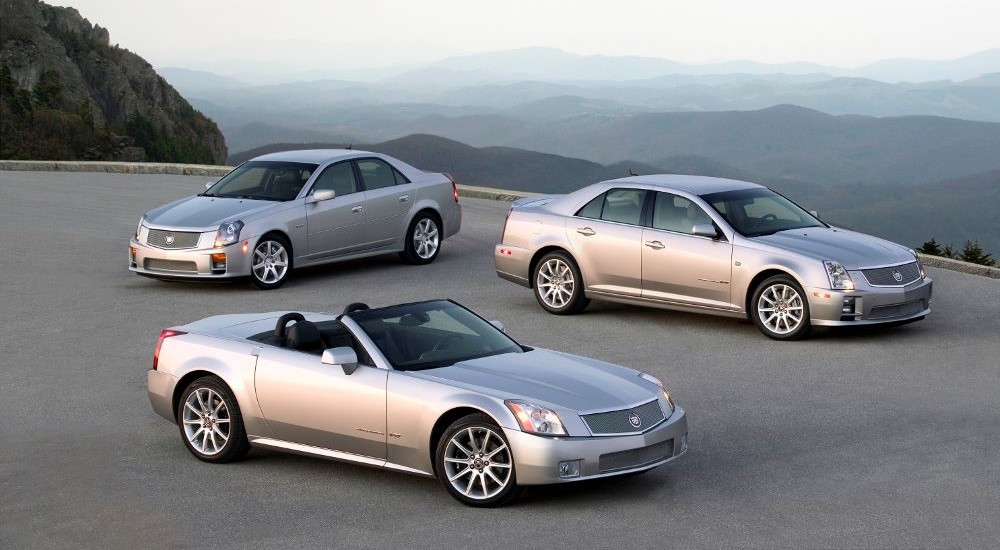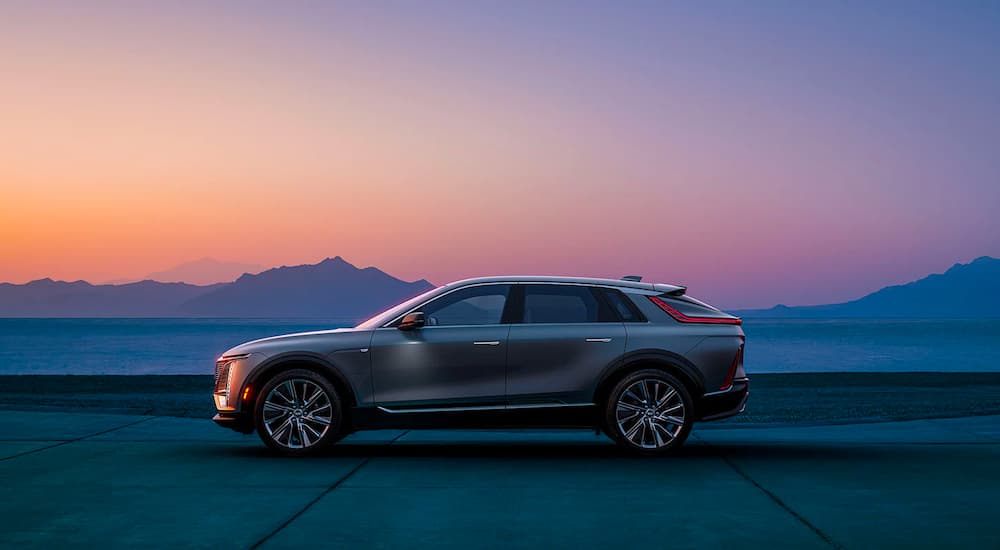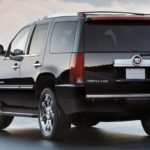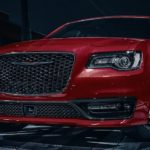In a crowded automotive market, it can be difficult to separate the best from the rest. Millions are spent on flashy ad campaigns to convince drivers that one model or brand has a distinct advantage over other cars, trucks, or SUVs, but in the end, it’s usually just a matter of taste. Then there are the exceptions that prove the rule. A quick look around your local car dealer will turn up no shortage of American-made models claiming to represent the height of luxury, comfort, and sophistication, but in the end, few can match the reputation of the country’s first true luxury brand: Cadillac. But what makes Cadillac’s lineup so special, and what has allowed the brand to rise to the top of the ultra-competitive luxury segment? In a word: innovation.
A real trailblazer in the industry, Cadillac has been the driving force behind some technological advancements that average drivers now just take for granted. The Detroit-born brand was the first automaker to introduce an electric starter system in their vehicles, a watershed moment in automotive history that made cars more accessible for drivers who struggled with the earlier crank start approach. Cadillac was also the first car company to include electric lights, power steering, and automatic windshield wipers as standard equipment, as well as climate control, night vision-enabled road hazard detection, and even airbags. That’s an impressive list for any brand, but it doesn’t even include Cadillac’s single biggest contribution to the automotive world: the V8 engine. Given its ubiquity in many of today’s larger vehicles, it’s easy to forget that there was a time when the V8 could be counted as an innovation, but that was exactly the case back in 1915 when Cadillac slotted the first production-level V8 under the hood of the Cadillac Type 51.
Of course, the V8 engine––and Cadillac as a whole––have come a long way in the 100-plus years since the Type 51’s introduction. The brand has never stopped tinkering under the hood, rolling out an impressive succession of powerful yet refined V8 models that seamlessly combine top-tier performance with the smooth, comfortable ride drivers have come to expect from the Cadillac brand. Join us as we look back through Cadillac’s V8 archives and see how today’s models are carrying on the brand’s proud tradition of luxury innovation.
Cadillac L-Head V8
It’s hard to understate Cadillac’s importance to the American automotive scene. As one of the world’s oldest automakers––and second-oldest in the U.S. to only Buick––Cadillac has had a lot of time to perfect its approach to automotive design, and one needs to look no further than 1915 to see the impact the brand has had on the industry. It was in that year that Cadillac introduced the Cadillac Type 51, a rear-wheel drive luxury car that featured the world’s first V8 engine in a production vehicle. The Cadillac L-Head V8 represented a change in the engineering world, bringing the V8 design from an experimental concept to a full-fledged, mass-produced feature.
The L-Head V8 was a game-changer for Cadillac, doubling the number of cylinders of any previous model and cementing the brand’s luxury credentials virtually overnight. The 5.1-liter V8 might not blow away any modern drivers with its stats––the engine produced just 70 hp and 180 lb-ft of torque on its debut––but it’s an important milestone in automotive history, proving for the first time that a V8 engine was a viable option for mass-produced vehicles. Named after its unique L-head side-valve design, the water-cooled engine displaced 314 cubic inches and was fitted with a single carburetor. Cadillac refined the design in 1923, introducing a 90-degree offset cross-plane crankshaft that increased smoothness and quickly became the industry standard while also adding some 15 hp to the equation.
Credit for the L-Head V8’s design goes to Cadillac chief engineer D’Orsay McCall White, a Scottish-born émigré whose impact on the engineering world went far beyond the Cadillac engine. White’s work in the field of oversized engines wouldn’t stop with the L-Head V8: after leaving the Detroit-based brand, the engineer would go on to design the V-12 Liberty Aircraft engine that was used in various tanks and aircraft in both World War I and II.
The L-Head V8-equipped Type 51 quickly became a best-seller, with Cadillac moving 13,000 units in 1915 alone. The engine itself was a true success story, upping the bar for the automotive industry as a whole and spurring no shortage of imitators along the way. The L-head engine has stood the test of time and is regularly recognized for its tremendous impact, being named one of the ten best engines of the 20th century by Ward’s.
Cadillac Northstar V8
The Northstar V8 engine was more than just a revolutionary engine: it was part of a comprehensive suite of technologies aimed at allowing Cadillac to keep up with its European and Japanese luxury competitors. The Northstar System included new advancements in steering, braking, and suspension technology such as variable valve timing, Road Sensing Suspension (RSS), traction control, four-wheel disc brakes, and Magnasteer speed-variable power steering. These components went a long way in helping Cadillac keep up with other luxury brands, but it was the Northstar V8, with its cutting-edge dual-overhead-cam design, that was the real centerpiece of the effort.
The Northstar V8 engine debuted in 1993, providing Cadillac drivers with the perfect gift to celebrate the brand’s 90th anniversary. First, put to use under the hood of the 1993 Cadillac Allanté, the Northstar V8 would become the standard engine across the entire Cadillac range (except the Fleetwood) by 1996. The 4.6-liter V8 could output either 270 or 300 hp, depending on the model––a figure that climbed to 320 hp by 2004 and even up to 469 hp for the supercharged Cadillac STS-V.
In addition to its dual-overhead cams, the Northstar engine also featured cast-iron cylinder liners, a distributor-less ignition system as well as a unique “limp home” feature that allowed drivers to keep their Cadillac on the road even after experiencing coolant loss. The air-cooled system fueled each individual cylinder one at a time which, when combined with the engine’s aluminum construction and considerable oil capacity, kept the Northstar from overheating for up to 100 miles until service could be performed. The Northstar turned heads upon its debut and was named one of Ward’s 10 Best Engines in 1995, ‘96, and ‘97. At one point, Cadillac even considered rolling out a new V12 version of the popular engine for use in the Escalade, but tightening emissions standards meant the concept never saw the light of day.
Cadillac Blackwing V8
While it might have enjoyed a relatively short time on the market, the Blackwing V8 can still be counted as a successful experiment in engine design. The 4.2-liter engine was designed from the ground up, with a twin-turbocharger providing enough boost to squeeze 131 hp out of each of the V8’s cylinders. We’ll save you from having to do the math: that’s around 550 hp in total which, when combined with 640 lb-ft of torque, made the Cadillac CT6-V one of the most powerful vehicles on the luxury market. The automaker also offered a downgraded 500 hp and 574 lb-ft of torque version for the base model CT6 outfitted with the Premium Luxury trim, but it’s the original Blackwing V8 that really made the rest of the industry stand up and take notice.
Cadillac’s first-ever twin-turbo V8, the Blackwing, needed a name that matched its historic nature, so the automaker went into the archives to dredge up a unique nod to the brand’s past. The name itself comes from French explorer Antoine de la Mothe, sieur de Cadillac, who founded what would become the city of Detroit in 1701. Cadillac’s logo is an updated version of Mr. Cadillac’s family crest, which originally featured a number of black birds on the iconic badge.
The Blackwing was a tremendous success on its debut, proving that, despite the rise of fuel-efficiency gas-powered vehicles and electric alternatives, American drivers still had a ravenous appetite for the type of raw power that only a V8 can deliver. Cadillac produced a limited run of CT6-V models in 2018, and all 275 sold out in just minutes when the pre-orders went live. In response to the unprecedented demand, a second version of the CT6 with a detuned Blackwing engine was also introduced and sold out in record time.
It was a promising beginning for the Blackwing, but various market conditions collided to see the powerful V8 discontinued after just two years. In addition to the CT6, the Blackwing was also supposed to power the Escalade, a larger high-performance sedan built on GM’s Omega platform, but when the project failed to come together, Cadillac had to reassess the Blackwing’s future. Despite an impressive early performance, the CT6 wasn’t hitting its expected sales numbers, making it tough to justify throwing the Blackwing engine––which cost an estimated $20,000 per unit––under the hood. Cadillac replaced the Blackwing with GM’s 3.0-liter twin-turbocharged LGW High Feature V6 engine going into the 2021 model year, spelling the end for one of the most ambitious engines to ever come out of Detroit.
Continued Impact of the Cadillac V8
While we’ve tried to collect some of the most impactful V8 designs from Cadillac’s long history, not every model made the cut. There are plenty more noteworthy engines lurking in the Cadillac archives, like the supercharged diesel Duramax 6.6 liter V8 engine found under the hood of the President’s own Cadillac limousine, “The Beast” (also known as “Cadillac One” or “First Car”). The powerful diesel engine might seem underpowered at just 214 hp, but there’s a good reason. The bomb-proof limo––complete with encrypted communication systems and even spare pints of blood, five-inch bulletproof glass, and run-flat tires––weighs some 14,000 pounds. Cadillac’s role in protecting the country’s Command in Chief goes a long way in illustrating just how well-regarded the brand’s vehicles are from an engineering standpoint, providing the utmost in safety and reliability for one of the most powerful people on the planet.
From the century-old L-Head V8 to the thoroughly modern Blackwing, Cadillac has set itself apart with a design philosophy that starts with any vehicle’s single most important component: the engine. Only time will tell what the future holds for Cadillac, but one thing is for certain: EVs will play a major role. Cadillac has announced plans to go fully electric by 2023, and the brand’s first EV offering, the Lyriq SUV, is already off to a strong start. As all-electric powertrains continue to take hold across the industry, you can expect that America’s first luxury brand will be right at the forefront, bringing the same commitment to innovation to the EV sphere that has already led to so much success with its legendary lineup of gas-powered V8 engines.

